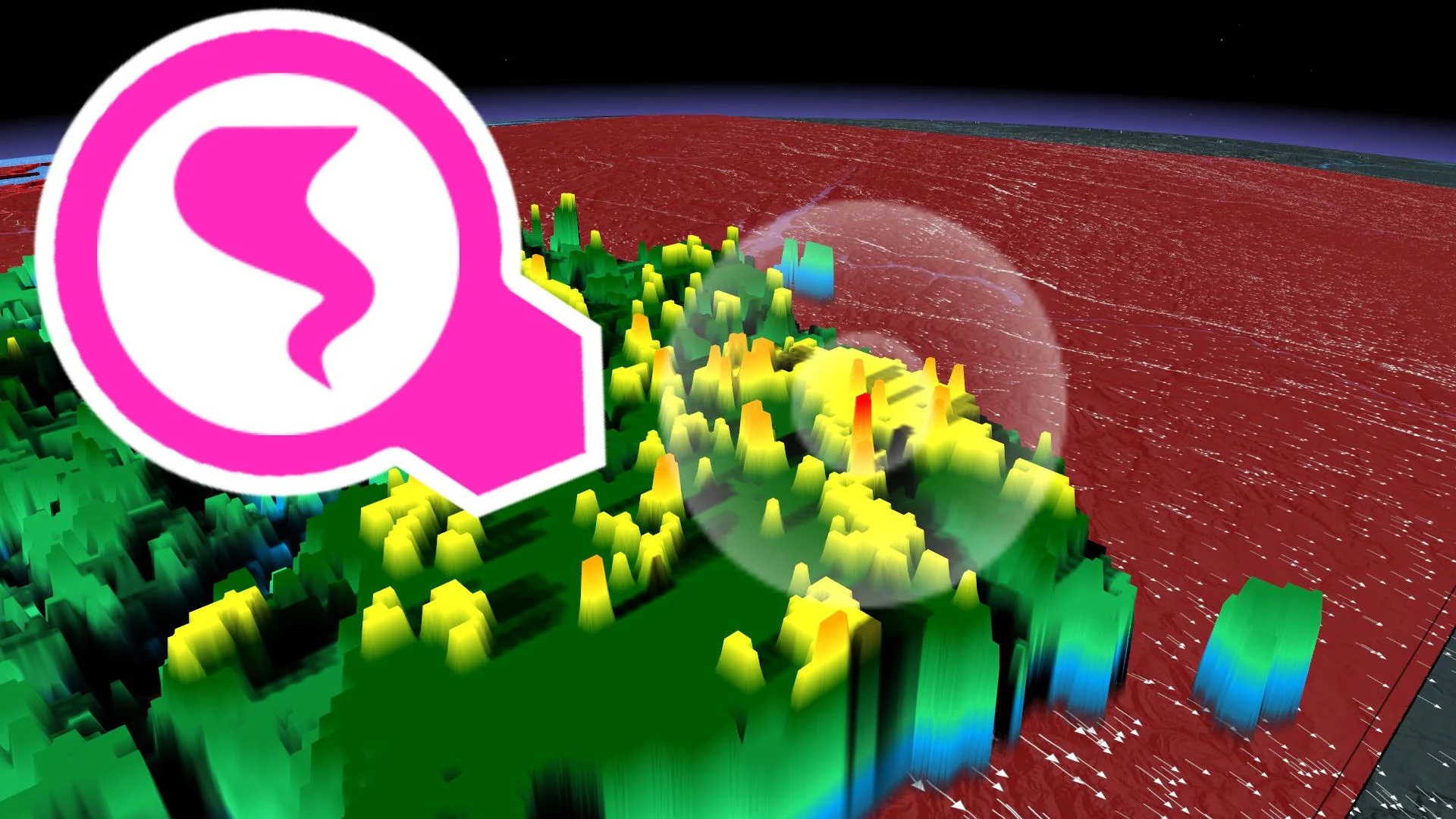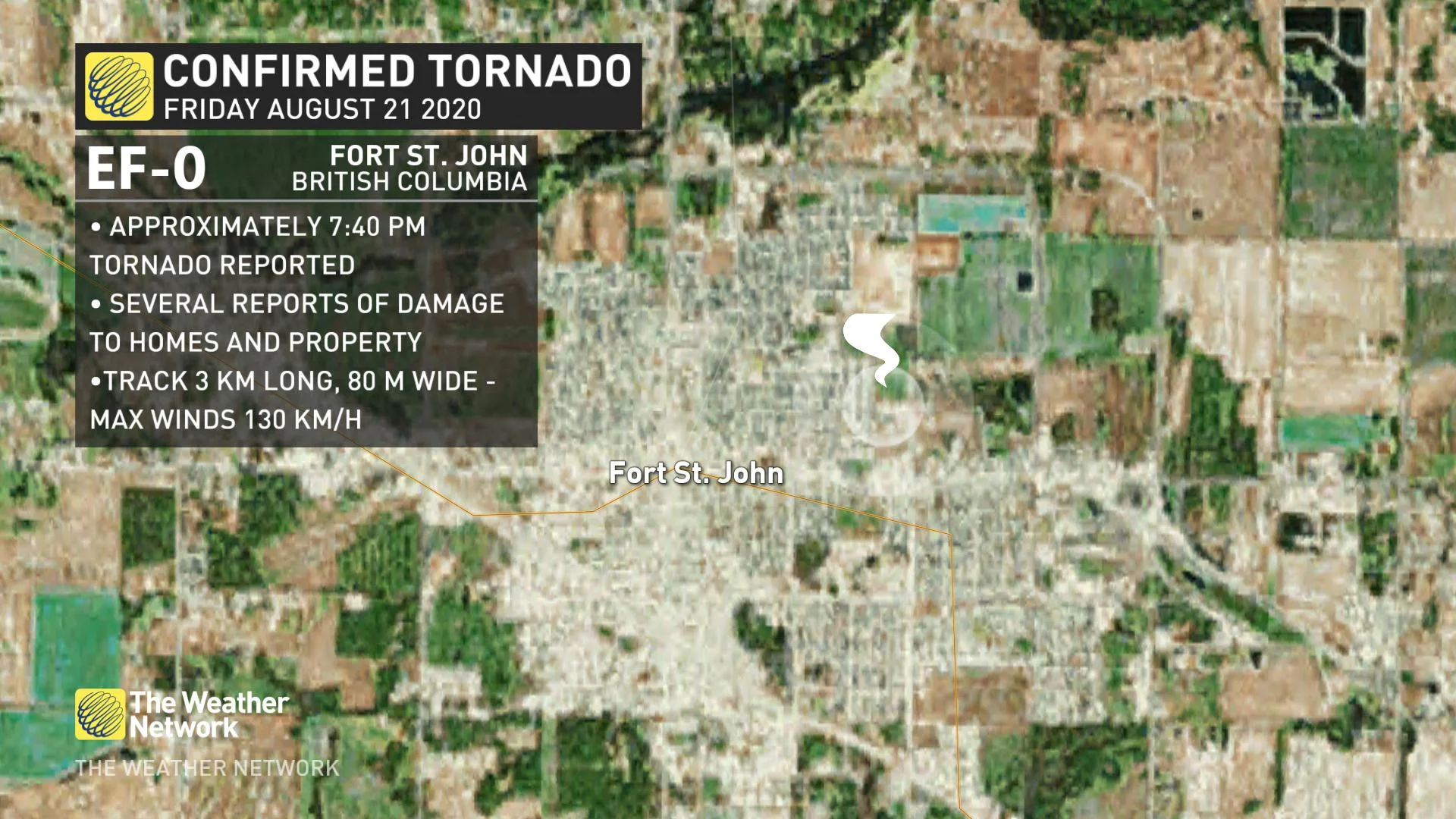
British Columbia seeing unusually high tornado count in 2020
This part of Western Canada is seeing an unusually active tornado season this year.
This is a rare one.
An unusually strong low pressure system was centred over the Central Interior on August 21st with an upper trough situated near Haida Gwaii. It turns out, this setup was enough to spawn B.C's second tornado of the year in Fort. St. John, a small community in northeast British Columbia.
Although there wasn't a lot of surface instability in the area, the low-level moisture and changing wind directions aloft was enough to generate a weak EF-0 tornado around 8:00 p.m. MST.

A statement from Environment and Climate Change Canada says that homes, vehicles and other property sustained damages. The tornado had a track 3 km long and up to 80 m wide.
Less than an hour before the tornado reports, the Fort St. John airport was reporting a thunderstorm with temperatures of 13°C and wind out of the ESE.
The first tornado in Canada this year was reported in Saanich B.C. back on May 21st. This tornado launched a trampoline into the air with 90 km/h winds.
YEARLY DATA
For reference, B.C. typically records less than one tornado per year, making these two tornado reports quite anomalous. This province will likely finish the year 400 per cent above normal for tornado reports.
However, with projects like the Western University-based Northern Tornadoes Project working to help identify as many tornadoes as possible, alongside citizen scientists and Environment and Climate Change Canada, as well as the greater availability of reports due to social media and modern technology, the confirmed tornadoes numbers will tend to skew higher than the averages indicated by previous research and climatology, according to Weather Network meteorologist Dayna Vettese.
"Research being done to identify as many tornadoes as possible will help to adjust those averages to a truer value and will likely result in higher climatological averages than previously indicated," said Vettese.
"We have already seen the number of tornadoes reported and confirmed jump significantly in the last five years due to the increased accessibility with social media and modern technology like smartphones."
She said previous research indicates that "true" tornado counts across Canada should be higher than what’s observed due to population distribution. Previously, if someone wasn’t there to see and report the tornado, there was no way to confirm it.
"Now we have greater access to technology such as better radars and satellites that allow us to see damage paths through unpopulated areas like never before. With smartphone availability, the public is able to more easily communicate and report severe weather," said Vettese.






